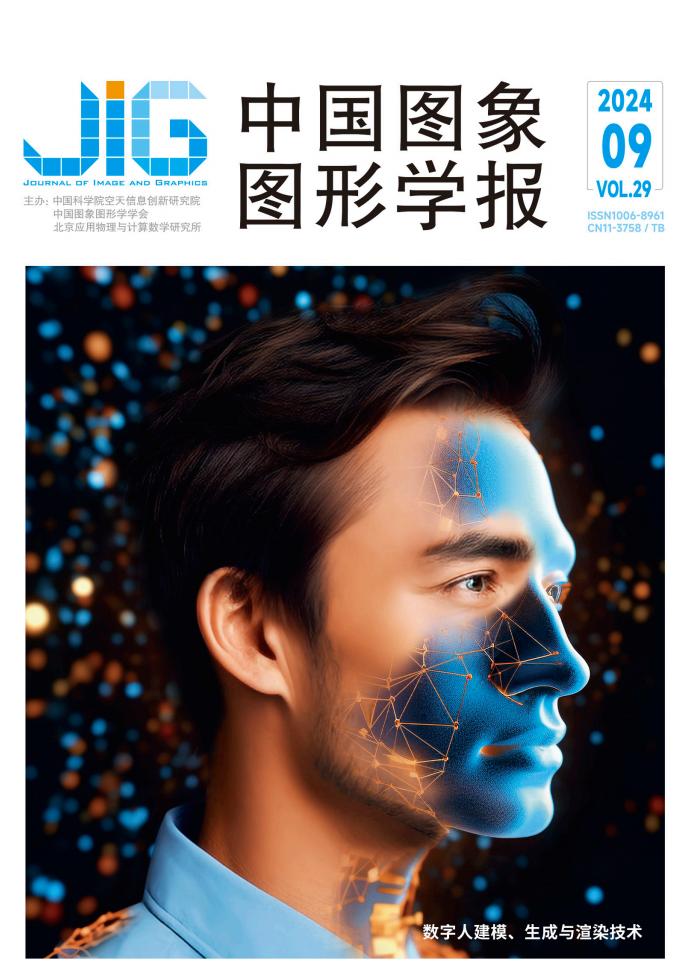利用骨架和红外融合模型识别人体动作
Q3 Computer Science
引用次数: 0
摘要
基于骨骼的人体动作识别传达了关于人体动态的有趣信息。在这项工作中,我们开发了一种使用并行流之间连接的多流模型的方法。这项工作的灵感来自于一种称为FUSIONCPA的最先进的方法,它融合了不同的模式:红外输入和骨骼输入。因为我们对研究与骨骼-分支主干相关的改进感兴趣,我们使用了时空图卷积网络(ST-GCN)模型和高效gcn注意力模块。我们的目标是在捕捉空间和时间特征时提供改进。此外,我们利用在ST-GCN模型中实现的图形卷积网络(GCN)来捕获骨架中的图形连通性。本文报告了在大规模数据集(NTU-RGB+ d60)上有趣的准确性,在交叉主题和交叉视角基准上分别超过91%和93%。与FUSION-CPA模型相比,该模型减少了900万个训练参数。本文章由计算机程序翻译,如有差异,请以英文原文为准。
Human Action Recognition with Skeleton and Infrared Fusion Model
Skeleton-based human action recognition conveys interesting information about the dynamics of a human body. In this work, we develop a method that uses a multi-stream model with connections between the parallel streams. This work is inspired by a state-of-the-art method called FUSIONCPA that merges different modalities: infrared input and skeleton input. Because we are interested in investigating improvements related to the skeleton-branch backbone, we used the Spatial-Temporal Graph Convolutional Networks (ST-GCN) model and an EfficientGCN attention module. We aim to provide improvements when capturing spatial and temporal features. In addition, we exploited a Graph Convolutional Network (GCN) implemented in the ST-GCN model to capture the graphic connectivity in skeletons. This paper reports interesting accuracy on a large-scale dataset (NTU-RGB+D 60), over 91% and 93% on respectively crosssubject, and cross-view benchmarks. This proposed model is lighter by 9 million training parameters compared with the model FUSION-CPA.
求助全文
通过发布文献求助,成功后即可免费获取论文全文。
去求助
来源期刊

中国图象图形学报
Computer Science-Computer Graphics and Computer-Aided Design
CiteScore
1.20
自引率
0.00%
发文量
6776
期刊介绍:
Journal of Image and Graphics (ISSN 1006-8961, CN 11-3758/TB, CODEN ZTTXFZ) is an authoritative academic journal supervised by the Chinese Academy of Sciences and co-sponsored by the Institute of Space and Astronautical Information Innovation of the Chinese Academy of Sciences (ISIAS), the Chinese Society of Image and Graphics (CSIG), and the Beijing Institute of Applied Physics and Computational Mathematics (BIAPM). The journal integrates high-tech theories, technical methods and industrialisation of applied research results in computer image graphics, and mainly publishes innovative and high-level scientific research papers on basic and applied research in image graphics science and its closely related fields. The form of papers includes reviews, technical reports, project progress, academic news, new technology reviews, new product introduction and industrialisation research. The content covers a wide range of fields such as image analysis and recognition, image understanding and computer vision, computer graphics, virtual reality and augmented reality, system simulation, animation, etc., and theme columns are opened according to the research hotspots and cutting-edge topics.
Journal of Image and Graphics reaches a wide range of readers, including scientific and technical personnel, enterprise supervisors, and postgraduates and college students of colleges and universities engaged in the fields of national defence, military, aviation, aerospace, communications, electronics, automotive, agriculture, meteorology, environmental protection, remote sensing, mapping, oil field, construction, transportation, finance, telecommunications, education, medical care, film and television, and art.
Journal of Image and Graphics is included in many important domestic and international scientific literature database systems, including EBSCO database in the United States, JST database in Japan, Scopus database in the Netherlands, China Science and Technology Thesis Statistics and Analysis (Annual Research Report), China Science Citation Database (CSCD), China Academic Journal Network Publishing Database (CAJD), and China Academic Journal Network Publishing Database (CAJD). China Science Citation Database (CSCD), China Academic Journals Network Publishing Database (CAJD), China Academic Journal Abstracts, Chinese Science Abstracts (Series A), China Electronic Science Abstracts, Chinese Core Journals Abstracts, Chinese Academic Journals on CD-ROM, and China Academic Journals Comprehensive Evaluation Database.
 求助内容:
求助内容: 应助结果提醒方式:
应助结果提醒方式:


